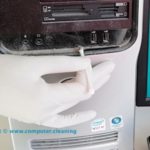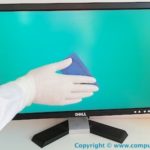Viruses
Viruses are the most common cause of illness. They are very small. Viruses can’t live on surfaces for very long. A common cold is a group of symptoms caused by 200 different viruses. This is why young children get 8–10 colds a year. There are always more cold viruses that they haven’t had yet! Viruses also cause intestinal and respiratory flu. Antibiotics kill bacteria but cannot kill viruses! They should not be used to treat illnesses caused by viruses. Luckily, we get better from most viral illnesses without medical treatment.
Bacteria
Bacteria are more complex than viruses. They can live and reproduce independently. Some can survive on surfaces for a long time, feeding off dirt or food and water. Most are harmless or even beneficial to us. They help us to digest food as well as prevent infections caused by harmful bacteria. Common bacterial infections include some ear infections, some cases of diarrhoea, strep throat, and urinary tract infections. Bacteria can also cause more serious infections such as tuberculosis, whooping cough, staph infections, bacterial pneumonia, and bacterial meningitis. Some bacteria – for example, methicillin-resistant Staphylococcus aureus (MRSA) – have developed ways to resist antibiotics and can cause serious infectious diseases that are hard to treat. Bacteria often attach to surfaces, especially moist ones, and form dense mats called biofilm. Bacteria in biofilms are much harder to kill. Keeping surfaces clean and dry prevents biofilms from developing.
When we kill germs on a surface with a chemical disinfectant, it is important to think of this as temporary. The surface will be home to new germs as soon as it is touched by hands, or sneezed or coughed on. Bacteria can grow and divide very fast. They can double in number in 10 minutes when they have food and water.
Fungi
Fungi, including yeasts and moulds, are everywhere. They can survive on surfaces for long periods. Fungi can cause common skin infections such as:
- diaper rash
- thrush in babies’ mouths
- ringworm
- athlete’s foot
- scalp infections, such as tinea capitis, and nail infections
These infections are bothersome and can sometimes take months to go away, but they don’t cause serious illness in children with healthy immune systems. They also don’t spread and cause infection in the rest of the body in healthy people.
Mould
Mould can be found anywhere there is constant moisture, like bathrooms and kitchens. You cannot “catch” mould from another person. Mould can cause irritations of the eye, skin, nose, throat, and lungs, and can trigger asthma. It can produce an allergic reaction in some people. The best way to control mould indoors is to get rid of moisture and leaks.
Parasites
Parasites are larger than bacteria. They enter our bodies through contaminated food or by penetrating our skin. They are common in developing nations around the world. A few parasites infect children in the United States. The three main parasites that are sometimes seen in ECE are:
- giardia, which is spread by
- drinking water that contains the giardia parasite;
- the faecal-oral route, (See “How do germs get into our bodies?” on page 6);
- pinworms, which are also spread by the faecal-oral route;
- scabies which is mainly spread by skin to skin contact and may be transmitted by objects.
Insects
Insects, though not germs, can also spread infectious diseases. West Nile virus and Western equine encephalitis are uncommon diseases that do occur in the United States and are spread by mosquito bites. Lyme disease and Babesiosis are diseases spread by tick bites.
Head lice, scabies, and bed bugs bite the human body and cause skin reactions. They can spread from person to person when they hitchhike from one body to another or, in the case of bedbugs, can be carried on luggage or bedding.
Fortunately, these infestations are only annoying. These insects do not carry serious diseases that can infect humans.
Where do we find germs in our bodies?
Bacteria and viruses are found in our body fluids:
- blood
- mucus
- saliva
- vomit
- stool (faeces)
- urine
- discharges from the eyes and skin lesions
A good rule to remember: if it’s wet and comes from someone else’s body, it can be infectious.
THE GOOD SIDE
Not all microbes cause disease. Bacteria, viruses, and fungi are part of the ecosystems of our bodies. We’re made up of 10 times as many microbial cells as human cells! All of the microbes in our body together weigh 3 pounds – as much as our brains! This collection of microbes is called our biome. We need our biome to survive.
Microbes help maintain the health of our bodies. For example, they
• make vitamins;
• break down tough plants so we can digest them;
• help to form our immune system and control inflammation.
Exposure to germs in early childhood teaches our immune system how to tell the difference between what is harmful and what is not. Allergies occur when the body sees ordinary, harmless things like pollen as harmful.
Some research even suggests that bacteria may help us maintain a healthy weight and protect us from asthma. When we kill microbes with antibiotics, we kill the good with the bad, which is why we should only take antibiotics when we really need them. And we shouldn’t think of all microbes as bad germs that need to be wiped out. Some illnesses are even treated using microbes. Probiotics or microbe-containing yoghurt are sometimes used to replace some of our “good” microbes that are destroyed by antibiotics.





